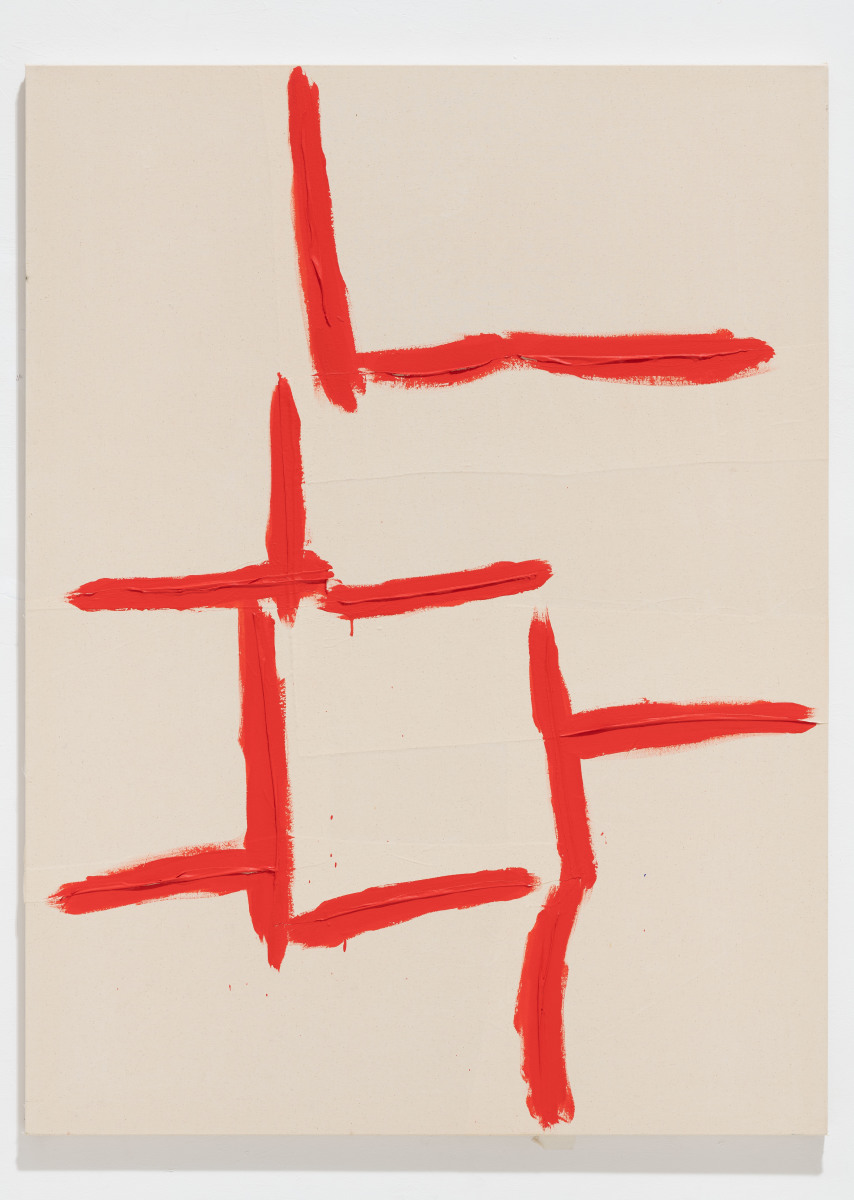Nam Tchun-Mo
Strokes and Rhythms
May 25 - July 20, 2024
Nam Tchun-Mo
Strokes and Rhythms
May 25 - July 20, 2024
"Contrary to what one might think at first glance, I proceed in a very complex way, hoping that the line will become a landscape with the help of light."
Nam Tchun-Mo is the guardian of this line. The guardian and the guarantor. So is consciousness. We must keep this line, both tense and flexible, without excessive rigour but avoiding any lyricism; a correct line, as much as possible... But what is a correct line? It is a well-nourished line, above all, a line loaded with memory, but which keeps itself from any chatter. It is a straight line without stiffness, or a curve without excessive volutes, that is wary of effects that are too easy and, more than anything, of those that result from too much virtuosity. It can be so seductive, a line!
It is also a nourishing line; it nourishes a space, a surface, which puts itself at its service without totally subordinating itself to it; a generous line which provides its benefits without displaying them.
This desire for asceticism is also found in the parsimony of colours. Nam Tchun-Mo's approach has sometimes been compared to that of Dansaekhwa artists. He has already expressed himself on this subject: he says that he feels distant from this historical movement - whose importance he recalls, including in his own journey -, insisting in particular on the context that has changed profoundly. Beyond this reference to a major artistic movement, it seems more appropriate to me to speak, for Nam Tchun-Mo, of the profound influence of the landscape. While Dansaekhwa artists feed on the feeling of nature, from a spiritual and philosophical point of view, it is the real, trivial landscape that feeds Nam Tchun-Mo's work. A landscape, if not monochrome, at least rather stingy in colour. And beyond the colour - or below, perhaps - we should talk about the tonality of this landscape, which is essentially made up of brown, beige and grey. There is nothing picturesque or demonstrative about this landscape. He even sometimes seems a little poor, almost dull. It's not beautiful and great scenery. It's more than that: it's a familiar, everyday landscape. Apart from the mountains that occupy almost the entire territory of the peninsula, it results from agricultural activity: small plots where rice is grown, many market gardens, and therefore countless tunnels, often black. Above all, the use of this landscape speaks to us of a particular relationship to space; of its rarity; a space that must be intensely occupied, even along roads and railways, like these garden strips densely populated with plants of all kinds that accompany us throughout the country's journey.
Olivier Delavallade, from Expanses, in Beam, Lines, Spring, Stroke, Hartmann Books, 2019.








